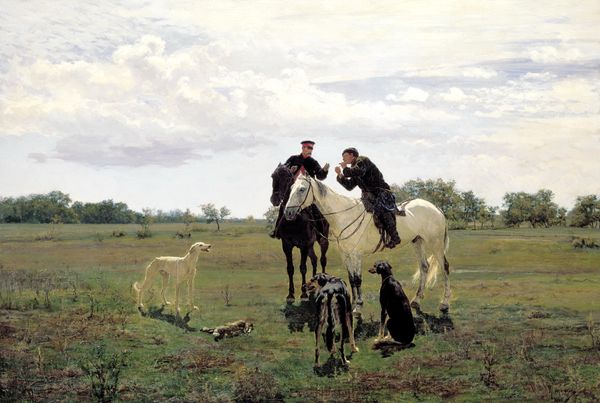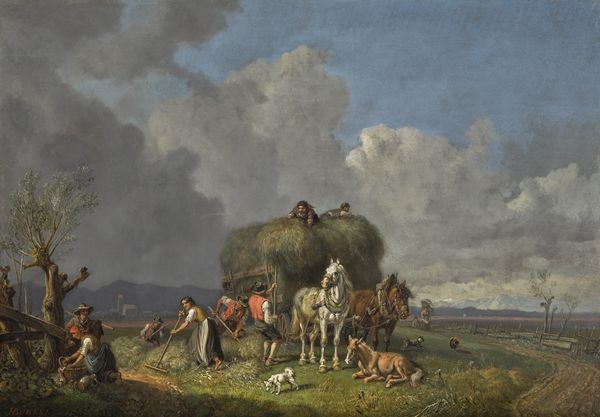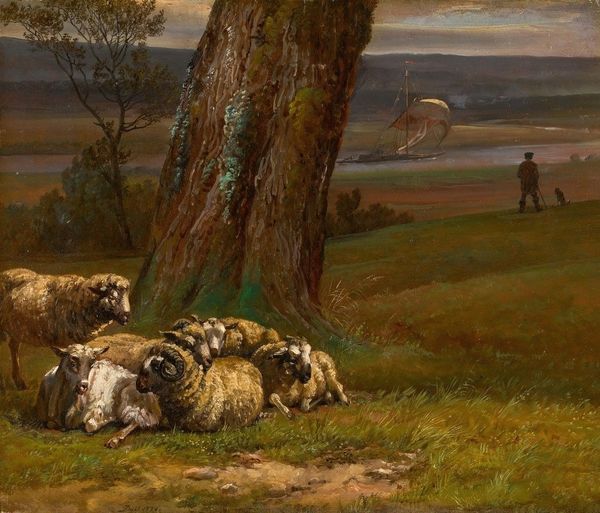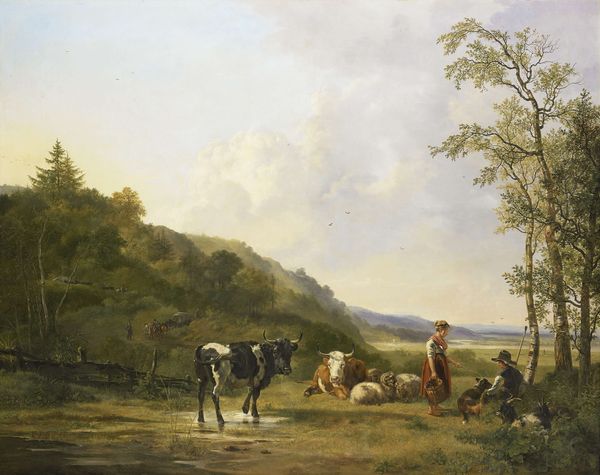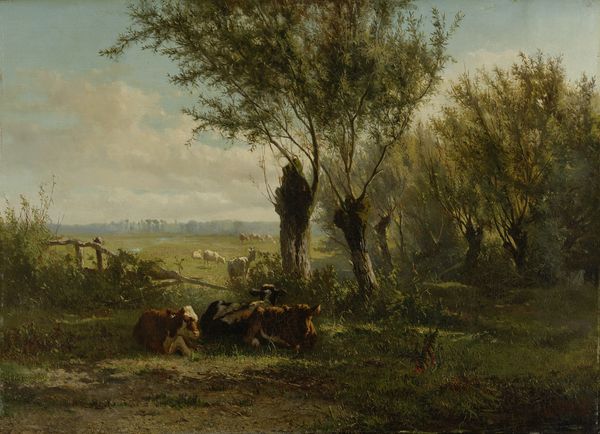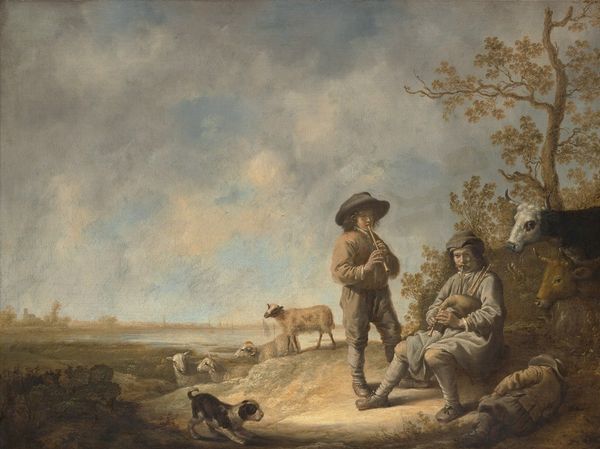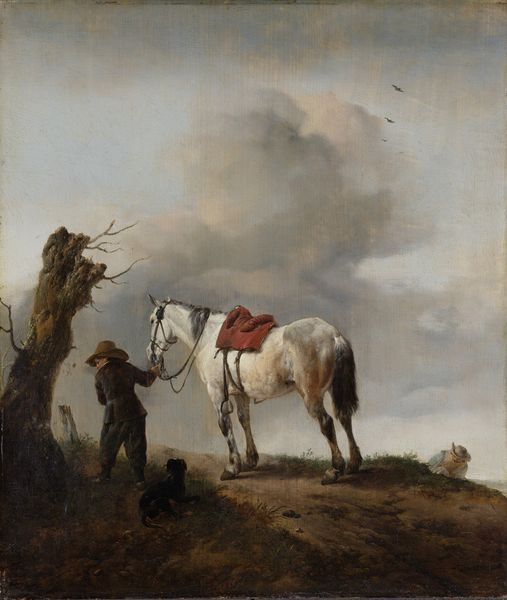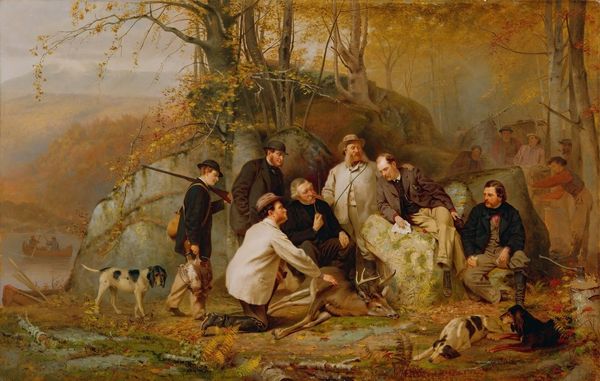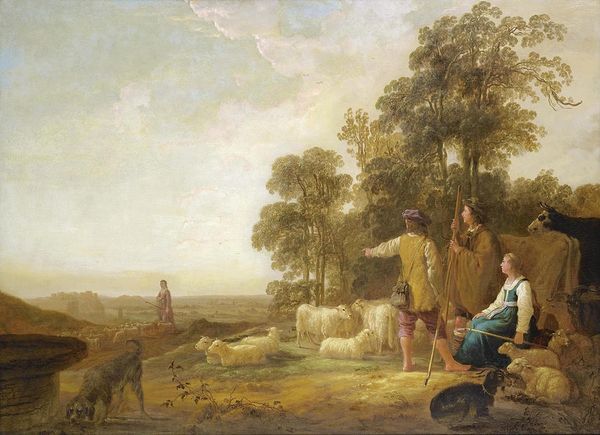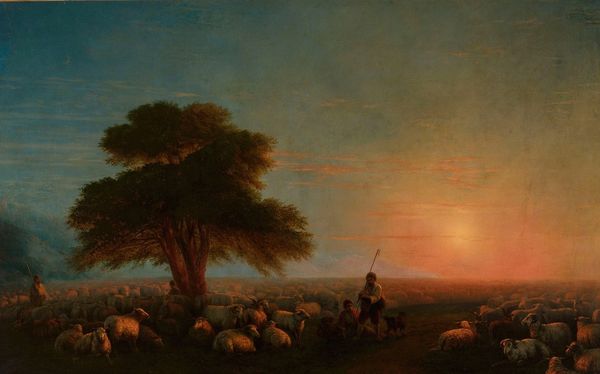
Dimensions: 92 × 73.4 cm (36 1/4 × 28 7/8 in.)
Copyright: Public Domain
Editor: This is "The Road to Market," an oil painting by Constant Troyon from around 1858. The misty light and earthy tones create a very idyllic, pastoral mood, though with a palpable sense of labor. I’m curious, what do you see when you look at this piece? Curator: Immediately, the grouping of figures—human and animal—resembles ancient depictions of migration or procession. Note how Troyon has positioned them along a road that recedes into the mist; it's a time-honored compositional strategy, suggesting the continuous movement of people and goods throughout history. Consider how the shepherdess, centrally placed and brightly lit, echoes classical Madonna figures, imbuing the scene with a sense of timeless, almost sacred, purpose. Does that resonance strike you as well? Editor: I hadn’t thought of it that way, but I see it now, yes! It's interesting to consider how something so seemingly simple, a rural scene, can connect to much older visual traditions. Curator: Indeed. Even the sheep, with their gentle forms, have a symbolic weight. They are simultaneously literal livestock and potent symbols of innocence and the pastoral life. But how does Troyon subvert those conventions, do you think? Editor: Maybe in the rather stern faces of the riders, or the slightly worn appearance of the sheep themselves. The 'innocence' seems… tempered. Curator: Precisely. Troyon's genius lies in subtly destabilizing idealized pastoral imagery. He invites us to recognize the harsh realities underpinning even the most seemingly tranquil existence. That recognition itself becomes part of the visual memory and emotional impact of the work. Editor: That tension between ideal and real gives the artwork such depth. I really learned a lot from this dialogue, thank you. Curator: A fascinating piece, no? It has revealed fresh visual insights to me as well.
Comments
No comments
Be the first to comment and join the conversation on the ultimate creative platform.

